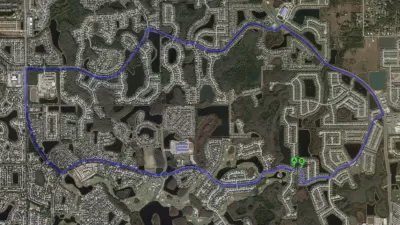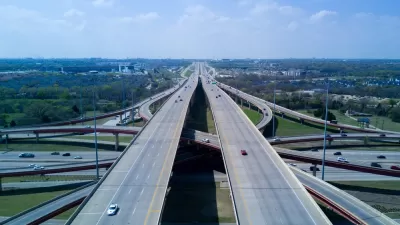Smart Growth America has released the "Measuring Sprawl 2014" report, which updates the 2002 report "Measuring Sprawl and Its Impact."

A new report by Smart Growth America, Measuring Sprawl 2014, analyzes development patterns in 221 metropolitan areas and 994 counties in the United States as of 2010 to produce several findings with relevance to the health outcomes of sprawling development patterns.
To produce the report’s sprawl index, “[researchers] used four primary factors—residential and employment density; neighborhood mix of homes, jobs and services; strength of activity centers and downtowns; and accessibility of the street network.”
“[The] report also examines how Sprawl Index scores relate to life in that community. The researchers found that several quality of life factors improve as index scores rise. Individuals in compact, connected metro areas have greater economic mobility. Individuals in these areas spend less on the combined cost of housing and transportation, and have greater options for the type of transportation to take. In addition, individuals in compact, connected metro areas tend to live longer, safer, healthier lives than their peers in metro areas with sprawl. Obesity is less prevalent in compact counties, and fatal car crashes are less common.”
Kris Hudson writes an article for the Wall Street Journal, first crediting the University of Utah research team behind the study, with a headline that focuses on two of the more obvious talking points of the report: car wrecks and obesity. Notably, Hudson begins the article by describing sprawl, its slowing rate, and allowing University of Utah Planning professor Reid Ewing to make the following proclamation: “[the report] tells us that the war on sprawl isn’t won yet…”
Hudson’s article, however, also concludes by quoting two dissenters among the academic and research communities, Harry Richardson and Wendell Cox, as well as a resident of Forsyth County who says the “advantages of living out here far outweigh” his commute.
Tanya Snyder also provides coverage of the report on Streetsblog USA, focusing on the rankings of metro areas and counties, as well as putting a fine point on the public health implications indicated by low index scores.
FULL STORY: Measuring Sprawl 2014

Alabama: Trump Terminates Settlements for Black Communities Harmed By Raw Sewage
Trump deemed the landmark civil rights agreement “illegal DEI and environmental justice policy.”

Planetizen Federal Action Tracker
A weekly monitor of how Trump’s orders and actions are impacting planners and planning in America.

The 120 Year Old Tiny Home Villages That Sheltered San Francisco’s Earthquake Refugees
More than a century ago, San Francisco mobilized to house thousands of residents displaced by the 1906 earthquake. Could their strategy offer a model for the present?

Ken Jennings Launches Transit Web Series
The Jeopardy champ wants you to ride public transit.

BLM To Rescind Public Lands Rule
The change will downgrade conservation, once again putting federal land at risk for mining and other extractive uses.

Indy Neighborhood Group Builds Temporary Multi-Use Path
Community members, aided in part by funding from the city, repurposed a vehicle lane to create a protected bike and pedestrian path for the summer season.
Urban Design for Planners 1: Software Tools
This six-course series explores essential urban design concepts using open source software and equips planners with the tools they need to participate fully in the urban design process.
Planning for Universal Design
Learn the tools for implementing Universal Design in planning regulations.
Clanton & Associates, Inc.
Jessamine County Fiscal Court
Institute for Housing and Urban Development Studies (IHS)
City of Grandview
Harvard GSD Executive Education
Toledo-Lucas County Plan Commissions
Salt Lake City
NYU Wagner Graduate School of Public Service





























